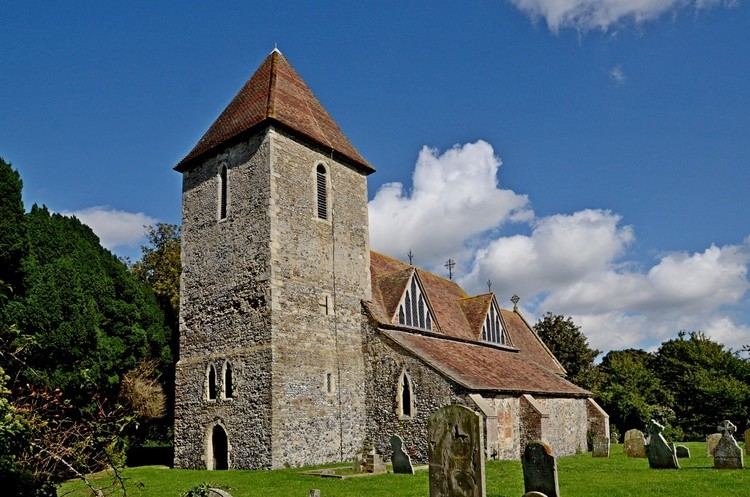Population 674 {2011} Civil parish Preston Local time Sunday 3:44 PM UK parliament constituency South Thanet | OS grid reference TR249610 Sovereign state United Kingdom Dialling code 01227 | |
 | ||
Weather 11°C, Wind NE at 27 km/h, 78% Humidity | ||
Preston-next-Wingham is a civil parish and village in valley of the Little Stour in the Dover District of Kent, England. The village is on the B2076 secondary road. The parish includes the hamlet of Elmstone. The main river through the area is a tributary of the River Stour. The suffix 'next-Wingham' distinguishes the area from Preston-next-Faversham and the Domesday book chronicled Preston as 'Prestetune;
Contents
Map of Preston, UK
In the 1870s, Preston-next-Wingham was described as:
"A village and a parish in Eastry district, Kent. The village stands on a rising-ground, above the marshes of the Little Stour river, 1½mile S E of Grove-Ferry r. station, and 6¾ E N E of Canterbury; bears the name of Preston-street, and has apostal pillar-box under Wingham".
The Village
Preston-next-Wingham is located 10 miles east of Canterbury, and a mile south of the Stodmarsh National Nature Reserve. The village is fairly scattered, but it still retains a local pub, a farm shop and a butchers. The nursary there has also gained a nationwide reputation for quality and rather exotic range of plants it grows. It also holds an annual steam rally and ploughing matches at Preston Court, which attract people from all across the Kent area. The village has 2 neighbouring churches, St Mildred Church and Elmstone Church, which are both 0.7 miles away.
History
Archaeological digs date the parish back to the Bronze Age and Iron Age. In the Domesday book, Preston-next-Wingham is recorded as having about 60 households, which was quite a sizeable quantity in relation to the British Isles population at the time. The church of St Mildred was founded in 700 AD by Saint Mildred, and it still has evidence of stonework from the Saxon age, similarly to the church at Elmstone The St Mildred Church dates back to the early 13th century and was extended a year later. It was also restored in 1857 by a gothic revival architect called William White, where he put in dormer windows to replace the aisle ones. It holds a rare Parochial library which was assembled in 1710, and was furnished with 67 volumes recommended by Thomas Bray. These books where transported in a case of 'the best seasoned oak' with strudy carrying handles. Normally, the cases were left unpainted after arrival, but the Preston case was painted white; nowadays however it looks more grey.
It is a grade I listed building and in 1800, Edward Hasted described it as:
‘three isles, a high chancel, and a north chancel, having at the west end a low pointed steeple, in which hang five bells. It is kept exceedingly neat and handsome, and the whole of it ceiled’
The name 'Preston' means 'Farm/settlement of the priests'. This comes from two old English terms that make up the name; prēost and tūn, which mean priest and farmland/estate respectfully. It was originally known as the name of its main manor house, Coppanstan. In the 9th century, the Archbishop of Canterbury came into possession of the house, which is where the old English name comes from.
The area of Preston-next-Wingham grew between 1831 and 1961, from 1,670 acres to 2,028 acres over the respected period.
Social Structure
The 1831 census that took occupation into consideration, split Preston-next-Wingham into 13 employers and professionals, 28 middling sorts, 99 labourers and servants and 0 others. The people who lived in Preston-next-Wingham developed houses over the years; there was 108 houses in 1831 which increased to 210 in 1961. According to the 2011 census, there was 336 males and 338 females living in the parish.
Transport
Getting to and from Preston-next-Wingham requires the use of a bus or coach. The Elmstone-near-Wingham bus and coach station is next to Elmstone church, as well as there being a station at Preston Hill. The closest train station is at Adisham, which is roughly 6 miles away.
